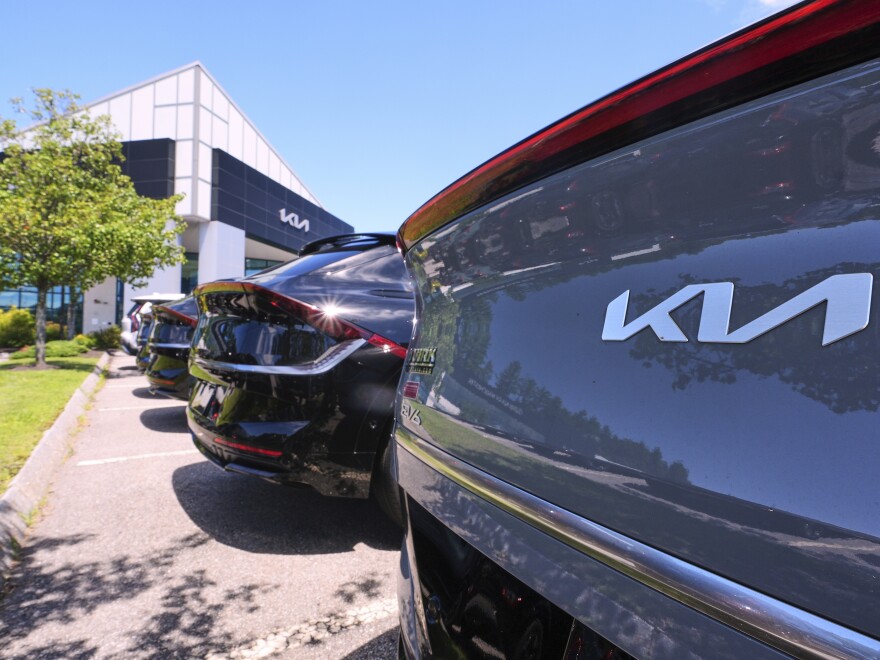The $7,500 federal EV tax credit for electric vehicle purchases is running out of time. The credit, which expires on September 30, was repealed by the One Big Beautiful Bill Act.
However, the IRS explained last week that there is some leeway in the deadline. In particular, even if the automobile isn’t delivered until later, the purchase may still be eligible for the tax credit if the buyer signs a legally binding agreement to acquire a vehicle by September 30.
Additionally, payment must be made prior to the due date. “A payment includes a nominal downpayment or a vehicle trade-in,” according to the IRS notes. In reality, the tax credit won’t be given until the buyer receives the vehicle, but it won’t matter if the transfer took place later as long as the legally binding agreement was in place prior to the deadline.
For instance, if your car would have been eligible for a tax credit in 2024 but not in 2025 and you took delivery on January 1, you were out of luck. Historically, the IRS has utilized delivery dates to assess eligibility for the tax credit.
However, the agency’s practice of basing eligibility on the date of contract signing is not new.
According to Sean Tucker, lead editor of Kelley Blue Book, “the IRS has used this exact same language before, when the rules for claiming the credit changed after the Inflation Reduction Act was passed.”
Additionally, during the tax and spending package deliberations, two Republican members of Congress claimed that it was the “legislative intent” of Congress to treat a legally enforceable contract as a purchase. This is in line with the current guidance.
The extra flexibility will be especially useful for auto buyers who wish to order a car that hasn’t been constructed yet or who want to purchase a car that is situated in another state and needs to be sent to them, according to Andy Phillips, vice president of the Tax Institute at H&R Block. They may not have enough time to deliver the car before the deadline in any scenario.
“I can’t give you exact numbers of how many people will now be able to take advantage of this credit” due to the IRS modification, he says. “But what I can tell you is for the people that know the vehicle they want, this added flexibility will make a meaningful difference to them.”
Tax credit 101
In recent years, the intricate federal tax incentives for electric vehicles have undergone numerous changes. (This is our latest guide.) In contrast to the majority of tax credits, this one can now be obtained upfront as a car purchase discount.
The tax benefits can total up to $7,500 for new cars. Vehicles must be manufactured in North America, have a particular percentage of battery materials and components sourced from the United States and some allies, and be priced under a set cap.
Buyers must earn less than $150,000 in adjusted gross income (or $300,000 for married couples) after tax-deductible retirement contributions in order to qualify for the credit.
The Ford F-150 Lightning, Chrysler Pacifica PHEV, and numerous Tesla, Chevrolet, Hyundai, and Kia models are among the qualifying automobiles mentioned here. Customers must verify with a dealer that each car is eligible for the credit, as not all do.
In the meanwhile, EVs that are at least two years old and sold for less than $25,000 are eligible for a used car credit of up to $4,000.
Additionally, $7,500 can be used to lease any EV for those who want to lease rather than buy, with no limitations on price, production site, or buyer income. This is a loophole that has appeased many automakers and irritated many critics of the EV tax credit.
A looming deadline
Between 2020 and 2023, sales of EVs and plug-in hybrids in the US increased significantly. However, since then, they have been stuck in neutral in the U.S., remaining stable at about 10% of the market, despite continuing to grow abroad. Both environmentalists and automakers found that disappointing.
The Trump administration is already taking back a number of initiatives, including the elimination of these tax incentives, that were intended to encourage EVs.
As customers and dealers scramble to meet the deadline, analysts predict a short-term spike in EV sales before a subsequent decline. According to auto data giant Cox Automotive, sales of used EVs increased 40% in July while sales of new EVs increased nearly 20% year over year. Stephanie Valdez Streaty of Cox forecast earlier this month that sales would be robust until the end of September and that “urgency is likely to remain high” as the tax incentives approach expiration.
Even while their growth is slower than anticipated, electric vehicles are still likely to gain appeal in the long run, and automakers are continuing to invest in new, less expensive EVs.
The loss of the tax credit is “pretty daunting” for automakers, who must also deal with fluctuating tariffs and high loan rates, according to Jessica Caldwell, head of insights at the auto data business Edmunds.
She claims that as the tax credit deadline draws near, EV searches on Edmunds.com haven’t surged as much as she had anticipated. “I don’t think a lot of consumers are necessarily aware this is happening,” she claims. “With so much news going out there around autos, particularly around tariffs, some of this message may be getting lost and people may find themselves disappointed come fall.”
Copyright 2025 NPR






